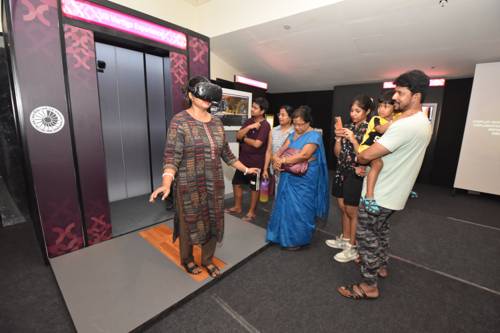
FAQ About The Role of Interactive Storytelling in Modern Media

What is interactive storytelling?
Interactive storytelling refers to a form of narrative where the audience can influence the direction or outcome of the story. This is achieved through choices made by the audience, often in the context of digital media, such as video games, interactive films, or digital platforms.

How does interactive storytelling differ from traditional storytelling?
Unlike traditional storytelling, which is linear and passive, interactive storytelling involves audience participation to shape the narrative. This participation often requires choices or actions from the audience, making them an active part of the story's progression and outcome.

What are some examples of interactive storytelling in modern media?
Examples of interactive storytelling include video games like "The Witcher" series, interactive films such as "Black Mirror: Bandersnatch" on Netflix, and choose-your-own-adventure books that have been adapted to digital platforms.

Why is interactive storytelling gaining popularity?
Interactive storytelling is gaining popularity because it offers a more engaging and personalized experience. By allowing audiences to make decisions, it creates a sense of agency and investment in the story, leading to a more immersive experience.

What role does technology play in interactive storytelling?
Technology plays a crucial role in interactive storytelling by providing the tools and platforms necessary to implement choice-based narratives. This includes software for game development, streaming platforms that support interactive features, and digital publishing that enables dynamic storytelling formats.

Can interactive storytelling be applied to educational content?
Yes, interactive storytelling can be highly effective in educational settings. It allows learners to engage with material in a more dynamic way, often through simulations or decision-based scenarios that enhance understanding and retention.

What challenges does interactive storytelling face?
Some challenges of interactive storytelling include the complexity of creating multiple narrative paths, ensuring a cohesive story despite different choices, and the technical requirements needed to support interactive features across different platforms.

How does interactive storytelling enhance user engagement?
Interactive storytelling enhances user engagement by involving them directly in the narrative process. This active participation keeps the audience more invested in the outcomes, leading to a deeper emotional connection and increased time spent interacting with the content.

Is interactive storytelling limited to digital media?
While interactive storytelling is most commonly associated with digital media, it is not limited to it. Physical choose-your-own-adventure books and live theater experiences where audiences make decisions are also forms of interactive storytelling.

What is the impact of interactive storytelling on the gaming industry?
Interactive storytelling has had a significant impact on the gaming industry by transforming games into narrative experiences. It allows for richer story development and player agency, which can enhance the emotional depth and replayability of games.

How do writers approach interactive storytelling creatively?
Writers of interactive stories often focus on developing branching narratives and character-driven plots. They must anticipate various choices and outcomes, designing the story to still be cohesive and emotionally resonant, regardless of the path taken by the audience.

What is the future of interactive storytelling in media?
The future of interactive storytelling is likely to see further integration with immersive technologies such as virtual reality (VR) and augmented reality (AR). This can provide even deeper engagement and more complex narrative interactions.

How does interactive storytelling influence audience retention?
Interactive storytelling can improve audience retention by encouraging repeat interactions through different narrative choices and encouraging longer engagement periods due to the immersive nature of active participation.

What are interactive films and how do they work?
Interactive films allow viewers to make decisions that affect the plot and outcome using a remote control or similar device. These films provide branching paths, where the narrative diverges based on the viewer's choices, creating personalized viewing experiences.

Can interactive storytelling be applied to non-fiction content?
Yes, interactive storytelling can be used for non-fiction content, such as documentaries and educational programs. By allowing viewers to choose what they want to learn more about, it can create more tailored and engaging informational experiences.

What tools are commonly used to create interactive stories?
Common tools for creating interactive stories include game engines like Unity and Unreal, narrative scripting software such as Twine or Inklewriter, and platforms like Netflix or YouTube that support interactive video content.

How does interactive storytelling affect storytelling in social media?
In social media, interactive storytelling can involve audience participation through polls, choices posed in stories, or interactive campaigns that engage users directly, making the narrative more relatable and participative.

What are some famous interactive books?
Famous interactive books include the "Choose Your Own Adventure" series by R.A. Montgomery and the "Fighting Fantasy" series by Ian Livingstone and Steve Jackson. These books offer readers multiple narrative paths to choose from.

How can filmmakers integrate interactive storytelling into their work?
Filmmakers can integrate interactive storytelling by creating branching narratives that allow viewers to make choices affecting the story. This can be achieved through platforms that support interactivity, such as certain video-on-demand services or virtual reality films.

What skills are important for creating interactive stories?
Important skills for creating interactive stories include narrative design, programming (especially in game development), an understanding of audience engagement strategies, and creativity to manage complex storylines with multiple endings.
